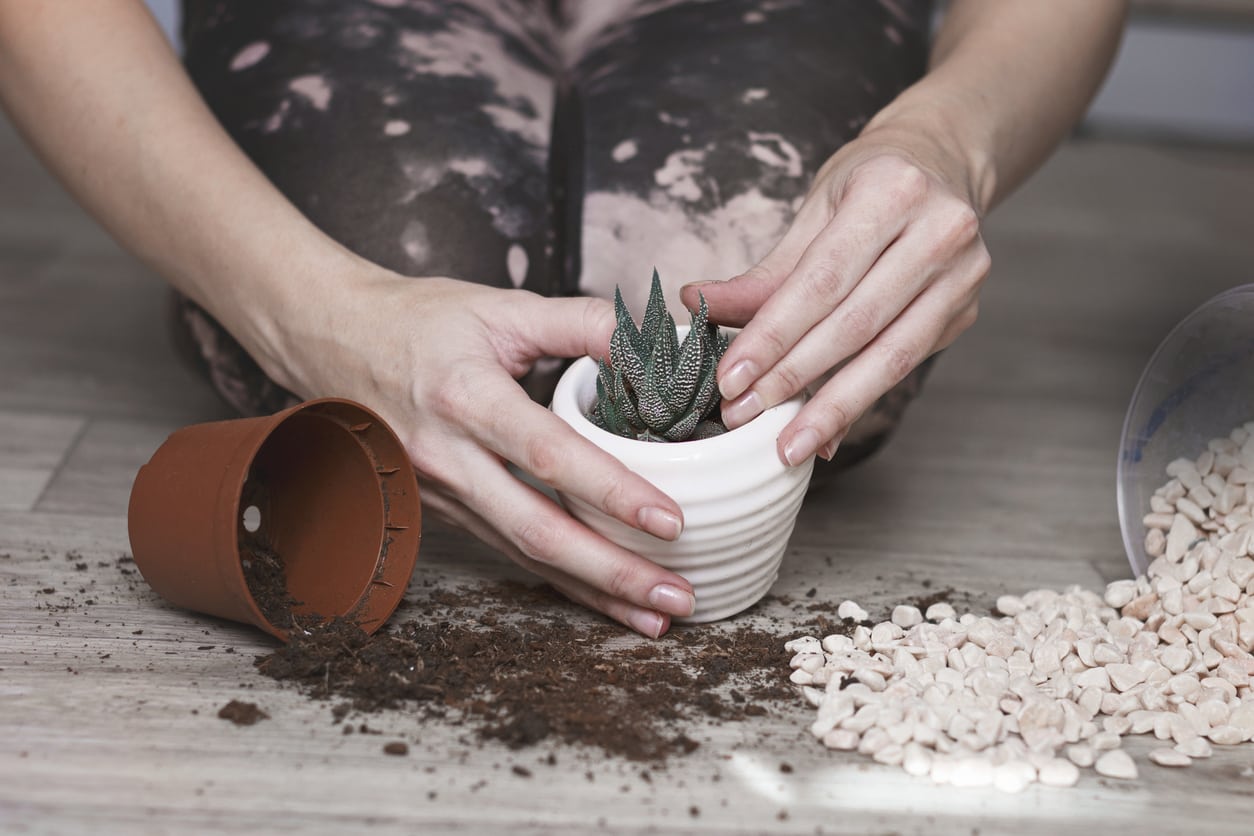Succulent Potting Soil Recipes: How To Make A Soil Mix For Succulents


As home gardeners begin growing succulent plants, they’re told to use a fast-draining soil. Those accustomed to growing traditional plants might believe their current soil is sufficient. Perhaps, a better description of well-draining succulent soil mix would be extra drainage or amended drainage. Succulent potting soil needs adequate drainage to keep water from remaining on the shallow roots of these plants for any length of time.
About Succulent Soil Mix
Proper potting soil for succulents should encourage the entire pot to dry out quickly, as many issues come from wet soil on or below the root system. The difference in what we use for traditional plants and the media in which we plant succulents lies in the water retention aspect. Soil that is well aerated and well drained, while still holding moisture, is appropriate for other plants. The succulent soil mix, however, should encourage moisture to exit the container quickly. You should choose material coarse in texture, such as pre-packaged succulent and cactus soil mixes. However, these may be difficult to find in some spots and pricey to order online with shipping. Many specialists want faster drainage than even these provide and prepare their own soil mix for succulents.
Making Potting Soil for Succulents
Online recipes abound. Most use a base of regular potting soil or the bagged succulent potting soil mix. If you choose to make your own mix, use regular potting media without additives. We’ll explain further ingredients to add to this when amending or making your own succulent potting soil. Frequent additions to succulent growing medium include: Coarse Sand – Coarse sand included at one half or one third improves soil drainage. Don’t use the finely textured type such as play sand. Cactus may benefit from a higher mix of sand, but it must be the coarse type. Perlite – Perlite is commonly included in most mixes for succulents. This product adds aeration and increases drainage; however, it is lightweight and often floats to the top when watered. Use at 1/3 to 1/2 in a mix with potting soil. Turface – Turface is a soil conditioner and calcine clay product that adds aeration to the soil, provides oxygen, and monitors moisture. A pebble type substance, it does not compact. Turface is the brand name but a commonly used term when referring to this product. Used as both a succulent soil mix additive and as a top dressing. Pumice – Pumice volcanic material holds moisture and nutrients. Pumice is used by some in large quantities. Some growers use pumice only and report good results in trials. However, the use of this type of media requires more frequent watering. Depending on your location, you may have to order this product. Coconut Coir – Coconut coir, the shredded husks of the coconut, adds drainage capabilities and can be wet repeatedly, as opposed to other products which might not accept water well after the initial wetting. Until recently, nobody mentioned coir (pronounced core) to the average succulent grower. At least one well-known succulent distributor uses coir as part of their unusual mix. I use a mix of 1/3 plain potting soil (the cheap kind), 1/3 coarse sand, and 1/3 coir and have healthy plants in my nursery.
Sign up for the Gardening Know How newsletter today and receive a free copy of our e-book "How to Grow Delicious Tomatoes".

Becca Badgett was a regular contributor to Gardening Know How for ten years. Co-author of the book How to Grow an EMERGENCY Garden, Becca specializes in succulent and cactus gardening.